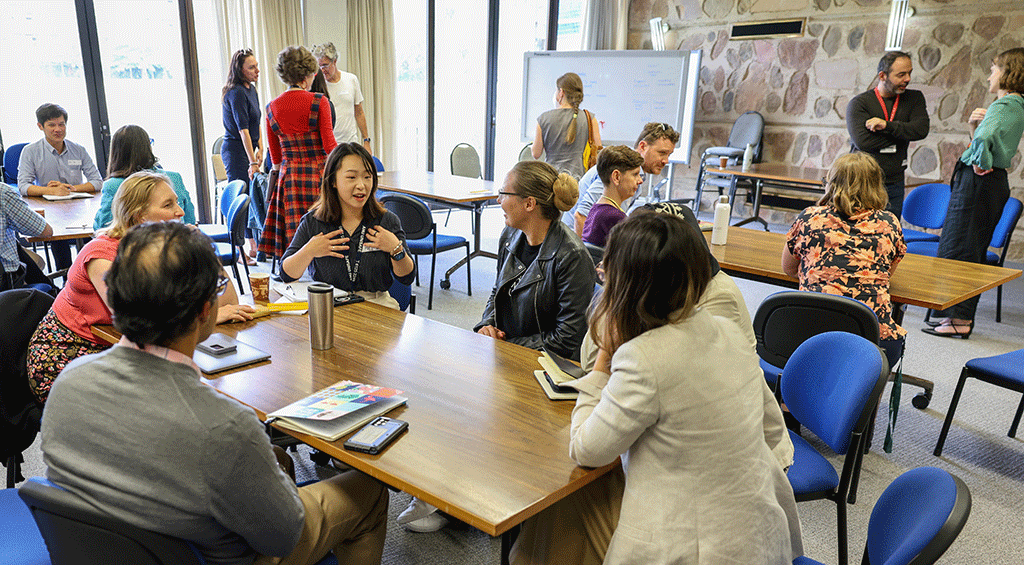Students respond well to relationship and a sense of belonging.
We have all been students at some point. It makes sense to most of us that students respond well in courses where teachers create empathic and welcoming spaces for students, provide students with personalised interactions, and where respectful and accepting relationships, rather than competitiveness, are fostered in curriculum design.
The research says…
A recent research paper by Naylor et al. (2021) found that students highly value relationships with teachers, as well as quality in teaching, and that this influences their motivation and enthusiasm. This is particularly relevant now that many students are studying remotely and online. Students tend to feel more disconnected, unmotivated and isolated in a fully or mostly online environment, unless we take active steps to create a positive and connected online environment.
How can we achieve this positive online environment?
When there are courses with hundreds of students learning online and decreasing resources to support them, how can we provide them with a rewarding experience?
In an environment of diminishing resources for teaching rather than increasing resources to meet the needs of large student cohorts, we need simple and practical strategies. Often this will require us to ‘make the most’ of the tools we have, to ensure students have the best experience possible. Many educators are already finding ways to insert their unique presence online and using the online spaces at their disposal to create a sense of their passion for their subject, and fostering a lively sense of connection. So what means do we have at our disposal, to help students feel a sense of belonging to the ANU community?
The concept of Community of Inquiry can help!
The concept of Community of Inquiry emerged in 2000 and became the most widely cited model for course development and teaching research in online education. Garrison, Anderson and Archer developed a model to operationalise their idea. The model consists of “three presences” – social, teaching and cognitive, all interacting to maximise student engagement and educational outcomes.

Figure 1: CoI diagram from Athabasca University
If we use this model as a framework, it is possible to overlay all of the technical tools we currently have available at ANU to create an online Community of Inquiry with students. Anderson’s 2017 blog post outlines his contemporary take on the model, integrates it with new technologies such as discussions, learning activities, and integrating social media.
Dr Joseph Hughes, Manager of the Educational Design team in the Centre for Learning and Teaching, spoke in a workshop in 2020 about how Senior Tutor, Bhavani Kannan, incorporated the ideas from the model into her course design (watch the 9:30min video here).

Slide from Dr Hughes’ talk.
Some tools for implementing a CoI in an online course
Wattle tools
Explore the interactive slide show below to learn which tools at ANU you can apply.
Increase your CoI teaching presence using video
Short videos are a great way to increase your presence for students, particularly large cohorts and student cohorts spread across countries.
Welcome videos are great way to increase your ‘warmth’ and presence. Create one and include yourself and any others in the teaching team and place it up front on your Wattle site. Ensure that it conveys your passion for teaching and your subject area through an informal, but enthusiastic welcome.
Ideas for other short videos
- “How this course works” video, a simple overview of the course design and its intent.
- Regular informal updates on the course page at the relevant topic or week, for example, “Hi, touching base to see how you’re all going” which might include study tips.
- Assessment feedback via video both group or individual
- Occasionally dropping into a student forum via video, to make a contribution to the discussion.
The Educational Design team at the Centre for Learning and Teaching are happy to provide support and advice on the use of video in your course. Contact us at eddesign@anu.edu.au.
References
Garrison, D. R., Anderson, T., & Archer, W. (2000). Critical inquiry in a text-based environment: Computer conferencing in higher education model. The Internet and Higher Education, 2(2-3), 87-105.
Larcombe, W., Baik, C. & Finch, S. (2020). Exploring course experiences that predict psychological distress and mental wellbeing in Australian undergraduate and graduate coursework students. Higher Education Research and Development, January 2020. (survey of 5,000 students)
Naylor, R., Bird, F., & Butler, N. (2021). Academic expectations among university students and staff: addressing the role of psychological contracts and social norms. Higher Education. (survey of 50 students)
Jill Lyall is an Education Designer in the Education Design (ED) team – one of three teams within the ANU Centre for Learning and Teaching (CLT).







